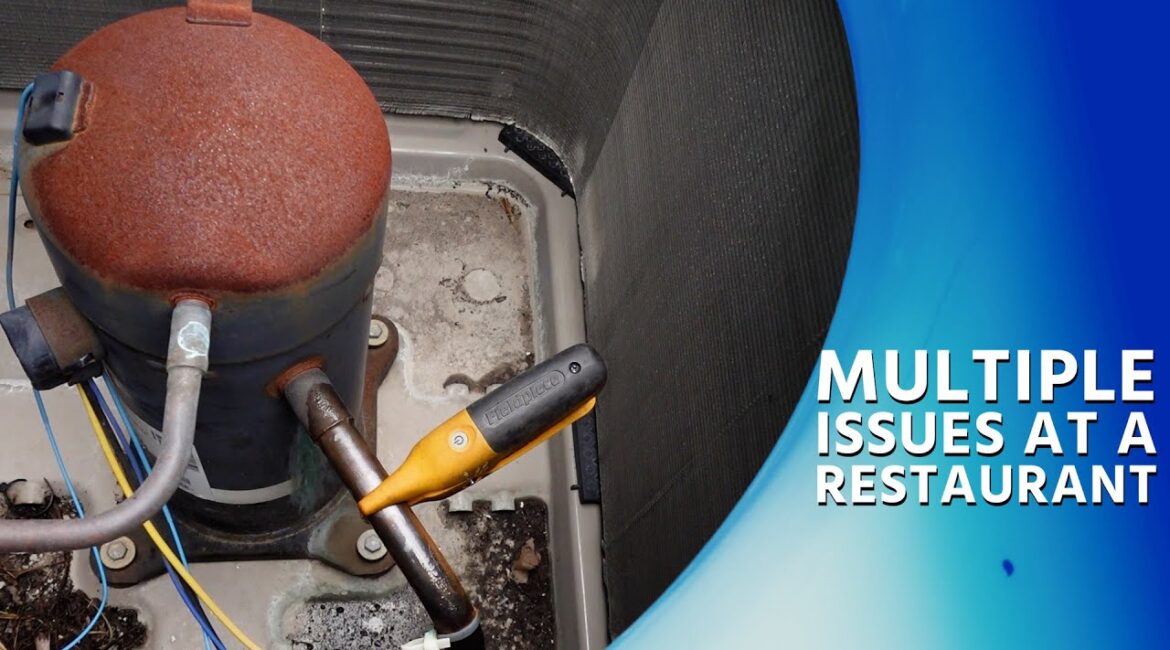Eric Mele gets Multiple Restaurant AC Issues Diagnosed. He investigates several different issues with a restaurant’s HVAC/R equipment, including an inefficient A/C compressor and a failed fan motor on a refrigerator.
The readings indicate that the suction pressure is high, around 152 PSI, with an 80-degree return. The temperature split is only 10 degrees, and the unit is running too warm with low subcooling.
When Eric pumps the charge down, he notices that his meter stalls out a bit. Then, he shuts off the blower and checks the suction line temperature. The suction line temperature rises past 91 degrees, meaning that hot gas is leaking back through the compressor. The data affirms Eric’s suspicion of an inefficient compressor.
Upon further inspection, Eric notices that the unit has an aftermarket fan motor, which may have damaged the compressor and contributed to the inefficiency that Eric is currently investigating. When running the unit without the blower fan, the suction pressure fails to drop as quickly as usual. So, the compressor is the primary issue, and replacement is necessary.
Eric also inspects another small unit with filthy coils and a fan that won’t spin. However, the compressor appears to pump normally. In this case, Eric replaces the fan motor and cleans the system. (As always, he makes sure the motor spins in the correct direction.) None of the bolts fit, however, meaning that Eric must use a set of customized screws. He doesn’t put too many in all at once, as he wants to make sure the motor works and spins the right way first.
Once Eric was sure that the fan motor worked as it should, he used a Dremel to customize the remaining screws and mount the motor correctly. He also redoes some wiring and sees if the unit can make temperature. He runs the unit in defrost and checks the amperage as the unit comes out of defrost. The relay appears to draw high amperage; upon further inspection, the relay appears to be working, but Eric still takes the safe route and replaces the start gear.
The belt also has an issue; the belt is loose and runs counterclockwise. Eric replaces the belt, tightens it appropriately, and ensures that it spins in the proper direction. He props the motor up to get the correct belt tension, but the problem is bigger than that; the entire fixture will need replacement.
Read all the tech tips, take the quizzes, and find our handy calculators at https://www.hvacrschool.com/.
Learn more about the 2022 HVACR Training Symposium at https://hvacrschool.com/symposium/.
source




